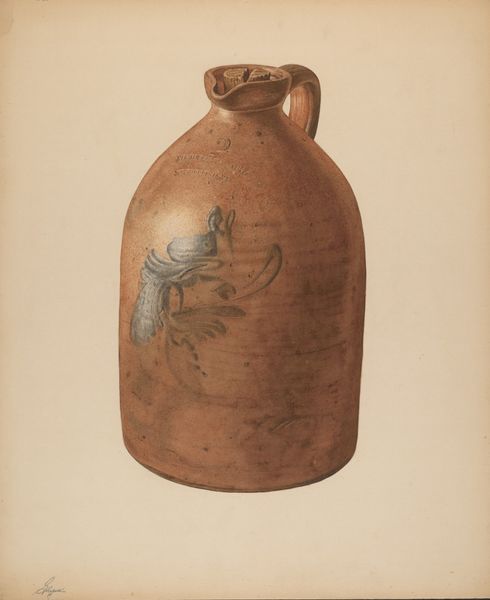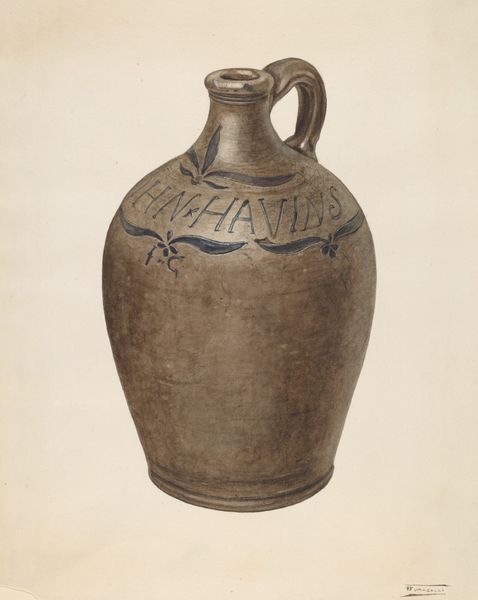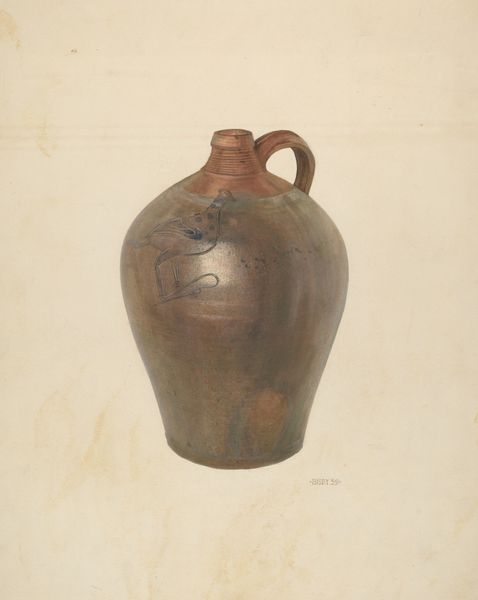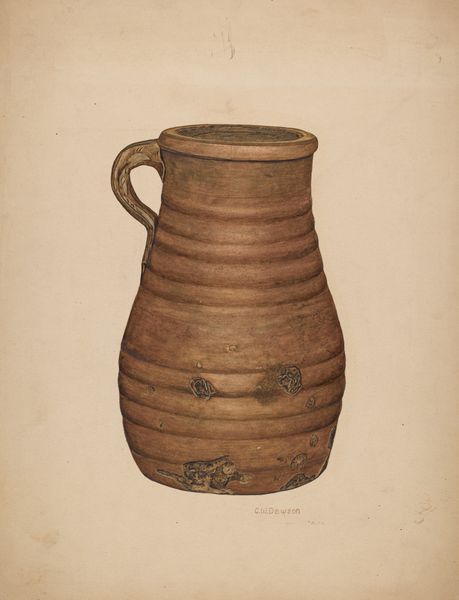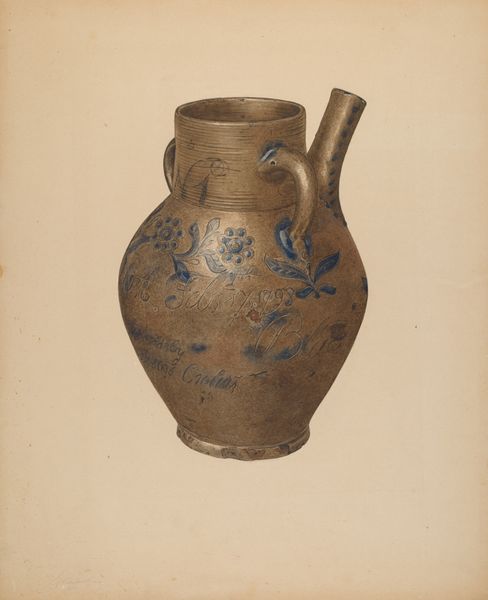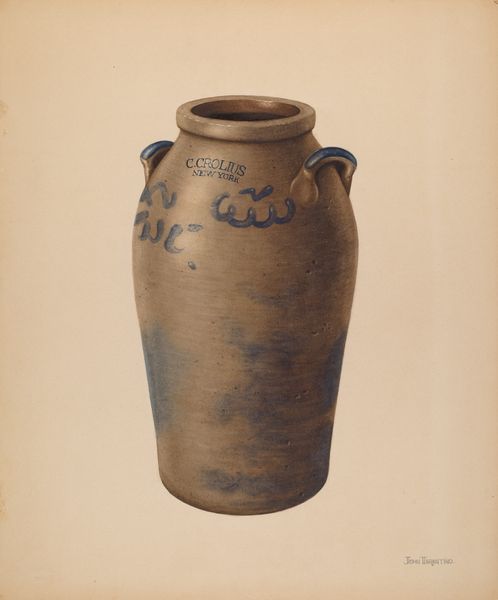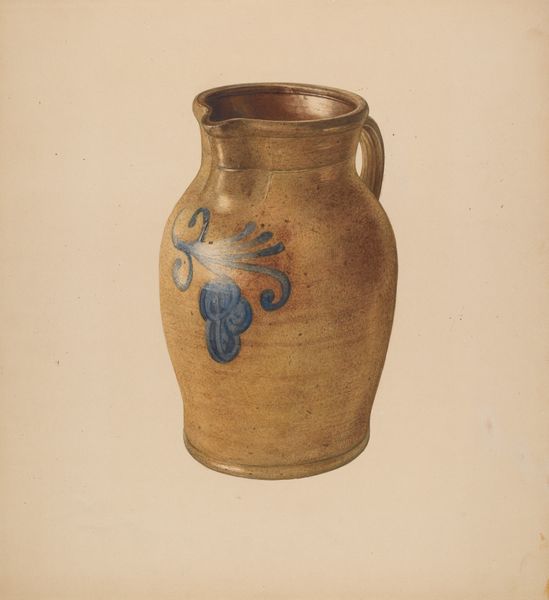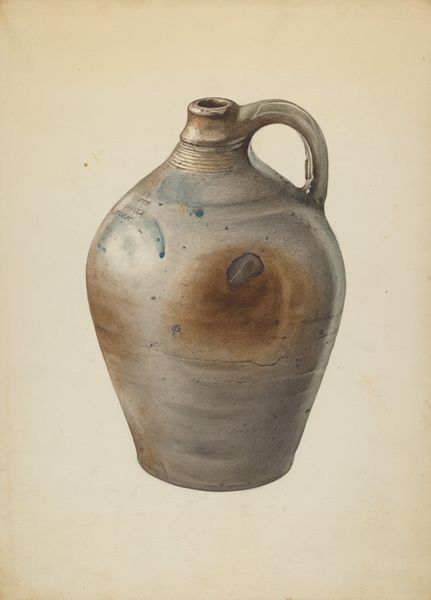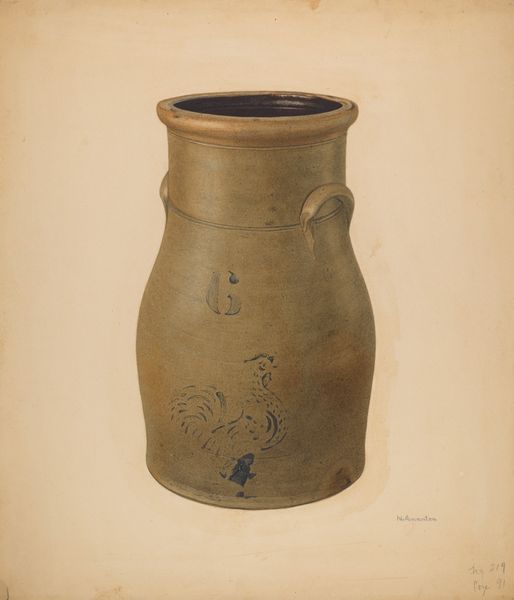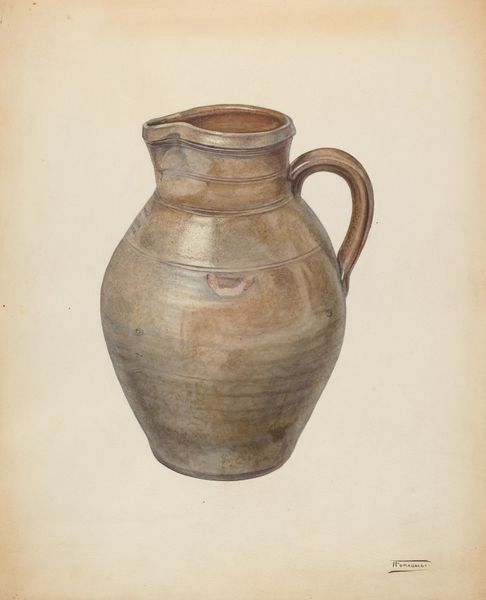
drawing, paper, ink, pencil
#
drawing
#
charcoal drawing
#
paper
#
ink
#
pencil drawing
#
folk-art
#
pencil
#
watercolor
Dimensions: overall: 30.3 x 23 cm (11 15/16 x 9 1/16 in.) Original IAD Object: 6 5/16" High 5" Base
Copyright: National Gallery of Art: CC0 1.0
Editor: Here we have Giacinto Capelli’s "Jug," made around 1940. It’s a drawing using pencil, ink, and watercolor on paper. I'm immediately struck by its folksy quality and how the jug seems to be "tagged" with various images like a stylized American flag, possibly referencing its location or origin. What's your take on it? Curator: Considering its historical context, the rendering of everyday objects often holds symbolic weight. The 'tagging' you mentioned isn't random, it's likely loaded with cultural meaning. What could these symbols, especially the American flag coupled with the word "York", have meant during the 1940s? What were the common public symbols? Editor: Maybe a sense of patriotism, or regional pride? Something easily relatable during wartime? Curator: Precisely. It taps into familiar imagery and sentiments, constructing a narrative tied to American identity and, potentially, regional distinctiveness amidst national unity. Considering the role of art during times of conflict and societal change, this simple "Jug" subtly champions shared values. Notice, however, the naive execution. It deliberately avoids artistic sophistication, which itself has implications about accessibility and the intended audience. Editor: That’s fascinating! It's not just a still life; it is a quiet commentary on American identity as it was understood at the time, created to reflect popular culture. Curator: Exactly! We are reminded that art serves both as a mirror and a mediator in our public lives. Even in humble representations like this jug, we can understand complex historical narratives through the language of symbolism and accessibility. Editor: This has really opened my eyes. Thank you! It highlights that studying art requires thinking beyond aesthetics, by including art and culture!
Comments
No comments
Be the first to comment and join the conversation on the ultimate creative platform.
